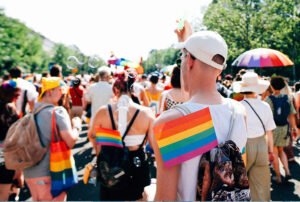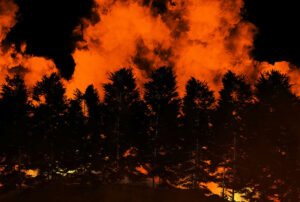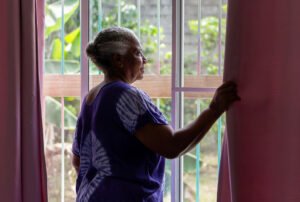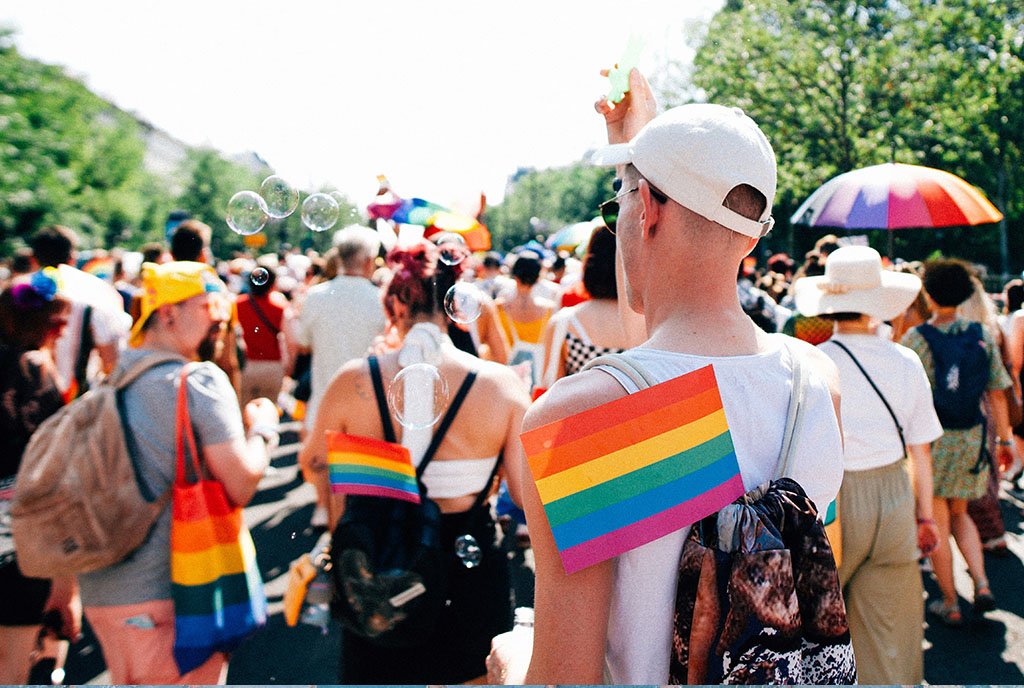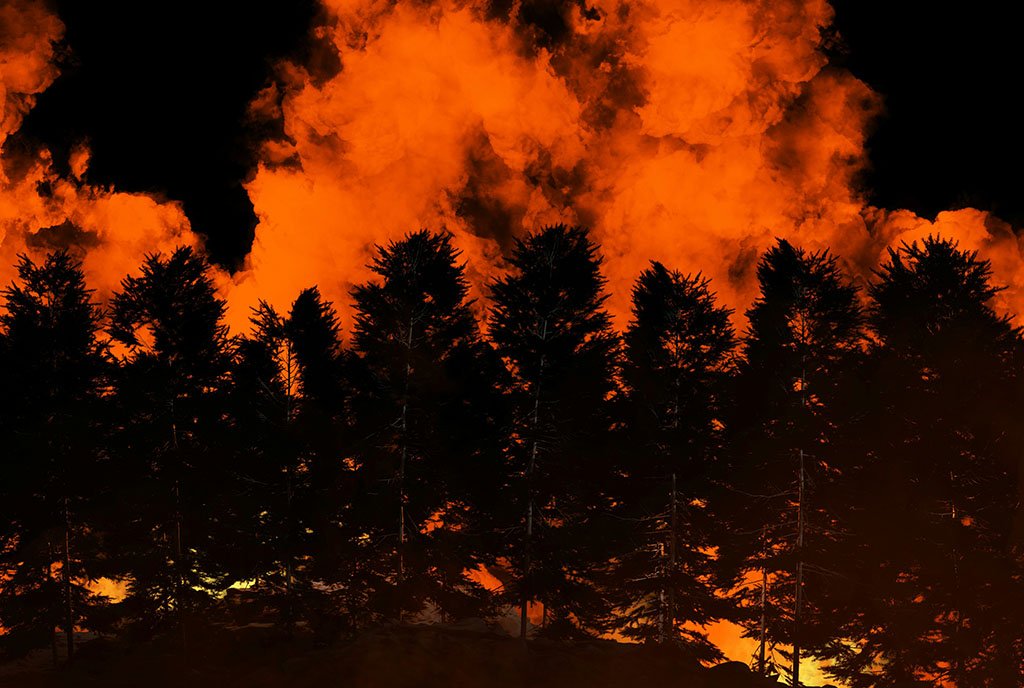
Across the United States, public libraries are under attack. They’re caught in the middle as books are banned in record numbers, with parents and others objecting to fiction and nonfiction that include queer characters or storylines, characters of color, experiences of racism, or an acknowledgment of human-caused climate change.
In response, libraries have set up banned book displays and librarians are even being trained to resist and combat attacks on free speech. The “major focus” of this year’s American Library Association’s annual conference was “book bans and how to fight them,” according to the AP.
Sometimes lost in the attacks on books and libraries is the backdrop of a global climate emergency. In the face of escalating disasters caused by climate change, public libraries don’t only provide access to urgently needed print and digital resources; they are increasingly becoming places to go for safety, security, and community.
Open to All and Always
More and more, public libraries are functioning as shelters. They serve as cooling or warming centers: opening their doors and extending their hours for people dealing with the climate emergencies of heat waves, heavy storms and record snowfalls, and power outages.
As High Country News wrote, reporting on the deadly heat wave that struck the Pacific Northwest in 2021, “For many, the safest and most accessible place to escape the heat was also free—the library.” According to that article, in Multnomah County, where Portland, OR, is located—and where temperatures during the heat wave reached a record 116 degrees—about 7,600 people over a period of four days fled to public libraries.
Public libraries also became the refuge for thousands of people in central Ohio during dangerously frigid temperatures in 2023. As Courtney Lewis with the Chillicothe Library told ABC 6 News, “Every seat was taken.”
In 2019, NPQ wrote the “role of providing public space in times of crisis has become an increasingly prominent part of what libraries do.” Libraries stayed open in Ferguson, MO, during protests that followed the police killing of Michael Brown, and in Baltimore when Maryland declared a state of emergency after Freddie Gray died in police custody.
In times of unrest, libraries are there. Even when businesses shutter and schools close, the public library remains a free, safe place.
Aging Buildings
Unfortunately, like many public buildings, the country’s libraries are aging. Some libraries are in sore need of repair, including adding or updating cooling and heating systems. As High Country News reported, the average age of a library building in the United States is 40 years. A public library in Mississippi closed down due to a lack of air conditioning during high temperatures in 2022. One year later, a library in New Jersey suffered a “catastrophic failure” of its air conditioner, leading to the building’s shutdown.
In some places, public library buildings are the best example of functioning infrastructure a community has.
Even library buildings that are functioning properly will need serious upgrades to handle the extremes of climate change when temperatures are soaring to deadly, record-breaking heights and storms are more severe. As High Country News wrote, libraries “provide essential services during heat, wildfires, power outages, and snow and ice storms, as well as during pandemics—all events that scientists predict will become increasingly frequent, thanks to climate change.”
The public library in Chillicothe, OH, has halted a planned $500,000 renovation of their annex to create a warming station instead. High Country News cited another public library in Oregon where a combination of heavy rain, rising sea levels, and drought is causing the building’s foundation to shift.
High Country News also pointed out that, despite their age and various states of disrepair, public libraries were some of the only cooling centers available to Pacific Northwest residents during the heat wave, which killed over a hundred people. In some places, public library buildings are the best example of functioning infrastructure a community has—and play a central role for the people they serve.
Sign up for our free newsletters
Subscribe to NPQ's newsletters to have our top stories delivered directly to your inbox.
By signing up, you agree to our privacy policy and terms of use, and to receive messages from NPQ and our partners.
The Designation of “Essential”
Public libraries have become gathering places; hubs for community building and resource sharing. Many now lend bikes or loan outdoor equipment, including skis, snowshoes, and gear for car camping and backpacking. They offer seeds, gardening tools (and books on gardening), and activity kits or board games to keep children who may be home from school occupied and learning. Some libraries also have a tool lending library to help patrons fix their houses, cars, or bikes, perhaps especially important in the wake of severe storms that often damage property.
Libraries also provide crucial internet and printer access, assistance with job hunting, and in a climate emergency, help finding resources for those displaced by extreme climate events.
The Federal Emergency Management Agency (FEMA) has gone so far as to recently classify libraries formally as “essential community organizations.”To support its community in so many ways, a library needs investment and resources. “Libraries are essential,” the Reverend Vernon K. Walker, senior program manager at the nonprofit Communities Responding to Extreme Weather, told High Country News. The nonprofit helps convert public spaces, like libraries, into “climate resilience hubs” meant to educate people about climate emergencies and to shelter people during them.
Overwhelmingly, the people most impacted by such crises are people of color, who are at higher risk of climate death or injury because they often live in hotter areas with less access to air conditioning and with greater occurrences of service outages.
“Underserved and low-income communities can face natural hazards more safely with updated infrastructure,” according to High Country News which wrote, “Equally poor areas with inadequate community infrastructure or none at all have much higher death rates. And libraries are part of a community’s infrastructure.”
“Particularly for libraries that tend to be in Black and Brown communities, and particularly in libraries that are in inner cities,” said Walker, “they are critical, essential, and needed.”
“People can just come and be. I think that’s an important role we play. But at the same time, we shouldn’t be a substitute for other social services.”
The Federal Emergency Management Agency (FEMA) has gone so far as to recently classify libraries formally as “essential community organizations.” Crosscut described librarians as “the new emergency responders.” But not all librarians feel equipped to handle this designation.
“I think because of the nature of our work, we’re always going to be in some ways on the front lines of these issues,” a Seattle Public Library employee, who requested anonymity, told Crosscut. “People can just come and be. I think that’s an important role we play. But at the same time, we shouldn’t be a substitute for other social services.”
Some libraries, including ones in Salt Lake City, UT and St. Louis, MO, have added licensed social workers to their staff, hoping to serve the needs of their patrons better and to relieve some of the increasing strain placed on librarians. According to the Salt Lake Tribune, the public library social worker hired less than a year ago has already helped thousands with such needs as housing assistance.
These needs will only grow as communities face the escalating impacts of climate change. As a Seattle Public Library employee told Crosscut, COVID changed the conversation about what public libraries could and should do, and how they can best help the public: “Now it seems like inclement weather will be another conversation to have about how the library fits in.”


